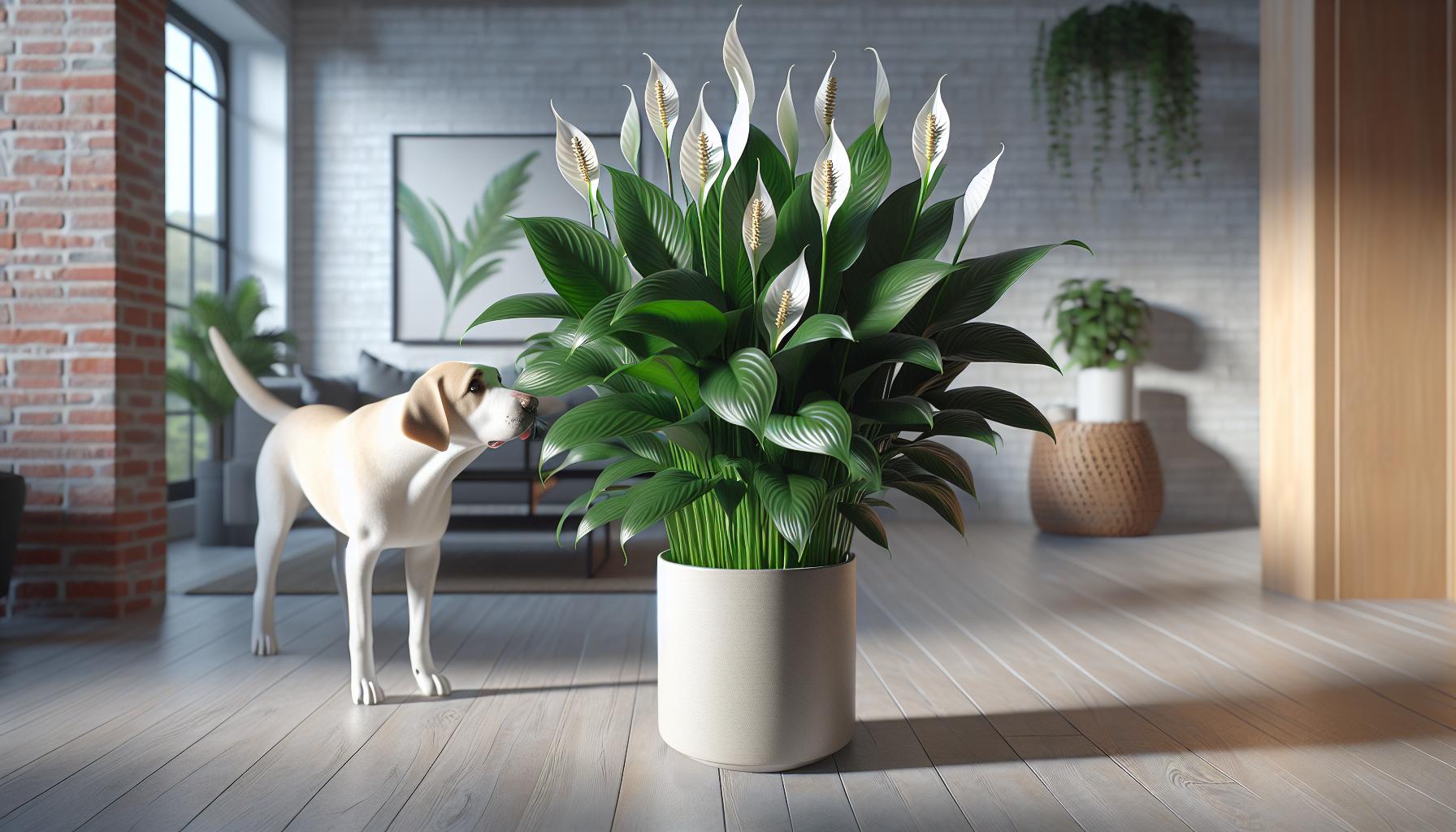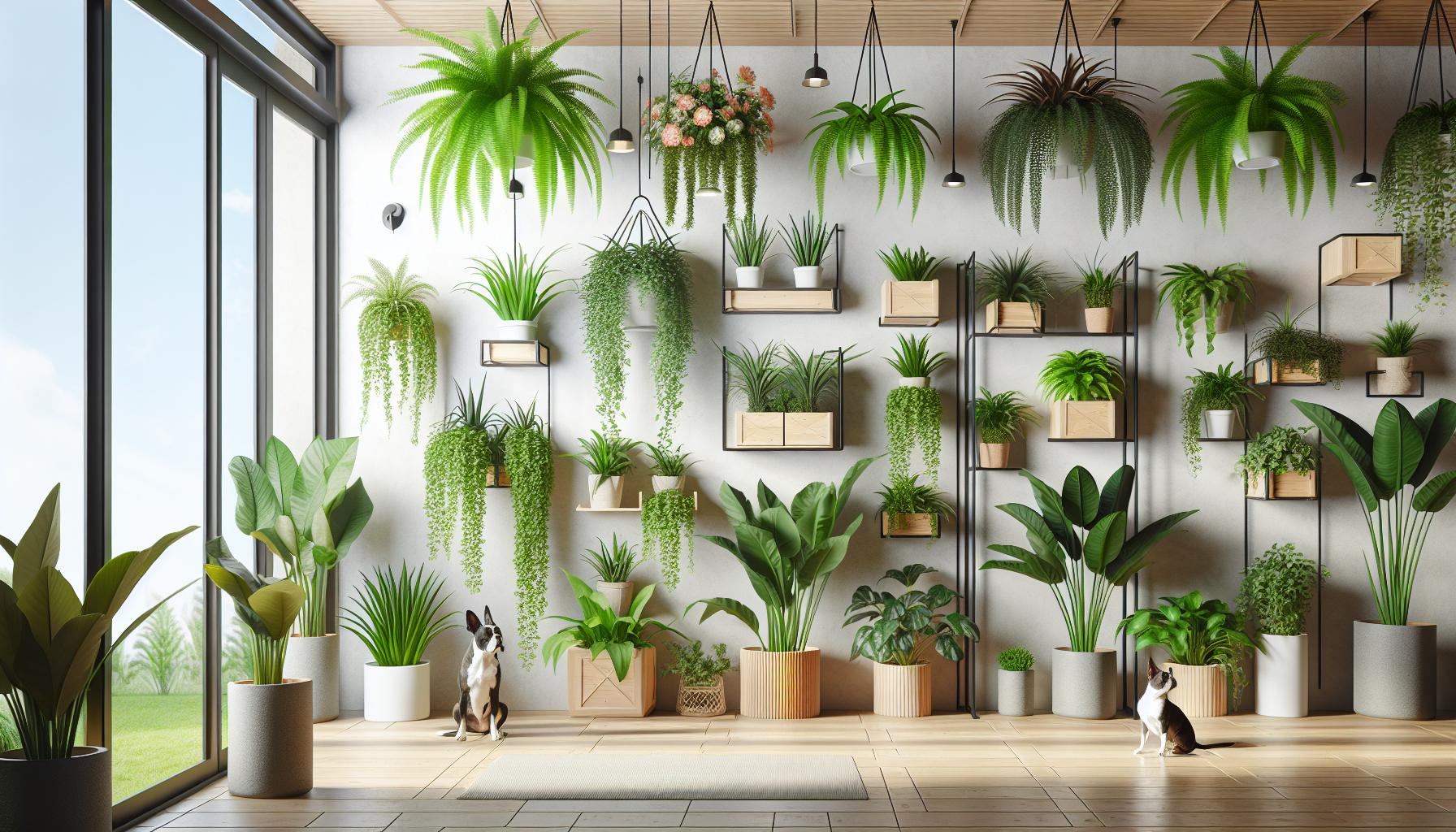As a dog owner and plant enthusiast, I know how challenging it can be to create a pet-safe indoor garden. While houseplants add beauty and freshness to our homes they can pose serious health risks to our furry friends. I’ve learned through experience that many common indoor plants contain toxic compounds that could harm or even be fatal to dogs if ingested.
From my research and consultations with veterinarians I’ve discovered that popular houseplants like lilies philodendrons and pothos are particularly dangerous to our canine companions. When dogs chew on or eat these plants they can experience symptoms ranging from mild discomfort to severe organ damage. That’s why it’s crucial to know which plants to avoid and how to create a safe environment where both your plants and pets can thrive.
Key Takeaways
- Popular houseplants like lilies, philodendrons, pothos, and sago palms are highly toxic to dogs and can cause severe health issues when ingested
- Common signs of plant poisoning in dogs include excessive drooling, vomiting, difficulty swallowing, lethargy, and irregular breathing – immediate veterinary care is essential if these symptoms appear
- Holiday plants like holly, mistletoe, and poinsettias pose additional seasonal risks to dogs and should be kept out of reach or avoided entirely
- Safe alternatives for pet-friendly homes include spider plants, Boston ferns, African violets, and parlor palms – all verified as non-toxic by the ASPCA
- In case of suspected plant poisoning, contact ASPCA Animal Poison Control (888-426-4435) or a veterinarian immediately, and preserve plant samples for identification
Common Toxic House Plants That Can Harm Dogs
Based on my research and consultation with veterinary experts, numerous popular houseplants contain toxic compounds that pose serious health risks to dogs. Here’s a comprehensive overview of hazardous plants and warning signs to watch for.
Popular Houseplants to Avoid
After extensive research, I’ve identified these common toxic houseplants that require immediate removal from dog-accessible areas:
- Lilies: Peace lilies, calla lilies & easter lilies contain calcium oxalate crystals
- Philodendron: All varieties cause severe mouth irritation & digestive issues
- Pothos: Contains insoluble raphides that cause immediate oral pain
- Sago Palm: All parts are toxic, with seeds containing the highest concentration
- Aloe Vera: The outer leaf contains aloin, causing severe digestive distress
- Dracaena: All species contain saponins toxic to dogs
- Snake Plant: Contains chemical compounds causing nausea & vomiting
- Dieffenbachia: Creates intense burning sensation in mouth & throat
Signs of Plant Poisoning in Dogs
I’ve learned these key indicators of plant poisoning through my veterinary consultations:
Immediate Symptoms:
- Excessive drooling or foaming
- Pawing at mouth or face
- Vomiting
- Difficulty swallowing
- Intense lip licking
- Lethargy
- Loss of appetite
- Diarrhea
- Irregular breathing
- Dilated pupils
| Emergency Response Steps | Time Frame |
|---|---|
| Contact Vet | Immediately |
| Collect Plant Sample | Within 5 minutes |
| Remove Access | Immediately |
| Document Symptoms | First 30 minutes |
| Monitor Vitals | Every 15 minutes |
Most Dangerous Indoor Plants for Canines

Based on data from the ASPCA Animal Poison Control Center, these indoor plants cause the most severe toxic reactions in dogs when ingested. I’ve documented their specific effects through research and veterinary consultations.
Lilies and Their Toxic Effects
Peace lilies contain insoluble calcium oxalate crystals that cause immediate oral irritation when a dog bites into their leaves or stems. The toxic compounds in lilies trigger:
- Intense burning sensation in mouth tongue
- Severe swelling of oral tissues
- Upper airway inflammation
- Difficulty breathing within 30 minutes
- Potential kidney damage if large amounts ingested
| Lily Type | Time to Symptoms | Severity Level |
|---|---|---|
| Peace Lily | 15-30 minutes | Moderate |
| Calla Lily | 10-20 minutes | Moderate |
| Easter Lily | 6-12 hours | Severe |
- Immediate oral tissue damage
- Excessive drooling within 5 minutes
- Vomiting episodes lasting 12-24 hours
- Cardiac rhythm abnormalities
- Liver enzyme elevation after 48 hours
| Plant Type | Toxic Components | Primary Effects |
|---|---|---|
| Pothos | Calcium oxalate insoluble crystals | Oral tissue injury digestive upset |
| Philodendron | Calcium oxalate proteolytic enzyme | Tissue damage organ toxicity |
Seasonal Holiday Plants That Can Harm Dogs

Holiday decorative plants create additional risks for dog owners during festive seasons. Here’s what I’ve learned about seasonal plants that require extra vigilance.
Christmas Plant Hazards
Christmas plants pose significant toxicity risks to dogs during the winter holiday season. Here are the most dangerous holiday plants:
- Holly berries contain theobromine compounds that cause gastrointestinal distress
- Mistletoe contains toxalbumin proteins triggering sudden blood pressure drops
- Poinsettias release irritating sap causing mild mouth irritation when chewed
- Christmas cactus contains fibrous material leading to digestive blockages
- Pine needles from Christmas trees create internal puncture risks
| Plant | Toxic Component | Primary Symptoms |
|---|---|---|
| Holly | Theobromine | Vomiting, diarrhea |
| Mistletoe | Toxalbumin | Low blood pressure, collapse |
| Poinsettia | Irritant sap | Drooling, oral discomfort |
- Easter lilies contain compounds causing acute kidney failure within 72 hours
- Daffodils include lycorine alkaloids affecting the nervous system
- Tulip bulbs contain allergenic lactones leading to severe gastric issues
- Hyacinths contain similar toxins to tulips causing intense stomach upset
- Peace lily pollen triggers respiratory inflammation when inhaled
| Plant | Time to Symptoms | Severity Level |
|---|---|---|
| Easter Lily | 12-24 hours | Critical |
| Daffodil | 15-30 minutes | Moderate |
| Tulip | 30-60 minutes | Moderate |
Safe Alternatives for Pet-Friendly Homes

I’ve researched numerous pet-safe plant options that create beautiful indoor spaces without compromising dog safety. Here’s a comprehensive guide to creating a dog-friendly indoor garden.
Non-Toxic Plant Options
These ASPCA-verified safe plants offer stunning alternatives to toxic varieties:
- Spider Plants (Chlorophytum comosum) – Trailing foliage ideal for hanging baskets
- Boston Ferns (Nephrolepis exaltata) – Lush green fronds perfect for humid spaces
- African Violets (Saintpaulia) – Compact flowering plants in purple pink white varieties
- Parlor Palm (Chamaedorea elegans) – Tropical appearance with delicate fronds
- Swedish Ivy (Plectranthus verticillatus) – Cascading vines for shelves containers
- Money Tree (Pilea peperomioides) – Round leaves with striking architectural form
- Bamboo Palm (Chamaedorea seifrizii) – Tall graceful stems with feathery leaves
- Calathea (Prayer Plant) – Decorative foliage with striking patterns
- Establish designated plant zones:
- Create elevated display areas using wall shelves
- Install hanging planters beyond jumping reach
- Use sturdy plant stands with wide bases
- Select appropriate containers:
- Heavy ceramic pots for stability
- Self-watering planters to prevent water spillage
- Wide-based containers to prevent tipping
- Implement safety measures:
- Place small stones over soil to prevent digging
- Use bitter apple spray around plant areas
- Install physical barriers like decorative fencing
| Plant Location | Minimum Height | Safety Features |
|---|---|---|
| Wall Shelves | 4 feet | Secure mounting |
| Hanging Plants | 6 feet | Strong hooks |
| Floor Plants | 2 feet | Tip-proof base |
Emergency Steps for Plant Poisoning
Contact a Veterinarian Immediately
I’ve found that calling a veterinarian or animal poison control center within 15 minutes of suspected plant ingestion maximizes treatment effectiveness. Keep these numbers readily available:
- ASPCA Animal Poison Control: (888) 426-4435
- Pet Poison Helpline: (855) 764-7661
- Local emergency veterinary clinic number
Collect Plant Evidence
For accurate identification during treatment, I recommend:
- Taking clear photos of the plant
- Gathering a sample in a sealed plastic bag
- Noting any parts that appear chewed or damaged
- Preserving any vomited plant material
Monitor Vital Signs
Record these key indicators while seeking veterinary care:
- Breathing rate (normal: 10-30 breaths per minute)
- Heart rate (normal: 60-140 beats per minute)
- Gum color (normal: pink)
- Body temperature (normal: 101-102.5°F)
Document Symptoms
Track these critical details for the veterinarian:
- Time of suspected ingestion
- First observed symptom
- Progression of symptoms
- Amount of plant potentially consumed
- Changes in behavior or activity level
- Remove remaining plant material from mouth
- Rinse mouth with clean water
- Keep dog warm & quiet
- Prevent access to food or water unless directed by a veterinarian
- Save any vomit containing plant material
| Emergency Contact | Response Time | Cost |
|---|---|---|
| ASPCA Poison Control | Immediate | $75 per case |
| Pet Poison Helpline | Immediate | $65 per case |
| Emergency Vet Visit | 15-30 minutes | $200-1000+ |
Conclusion
Creating a safe indoor environment for our furry friends requires careful consideration of the plants we bring into our homes. I’ve learned that being proactive about plant selection and placement is far better than dealing with a pet emergency.
By choosing pet-safe alternatives and implementing proper safety measures we can enjoy the beauty of houseplants while keeping our dogs protected. I recommend keeping the ASPCA Animal Poison Control Center number handy and acting quickly if you suspect your dog has ingested a toxic plant.
Remember that a beautiful indoor garden and a happy healthy pup aren’t mutually exclusive. With the right knowledge and precautions you can create a thriving plant-filled space that’s safe for your four-legged family member.




